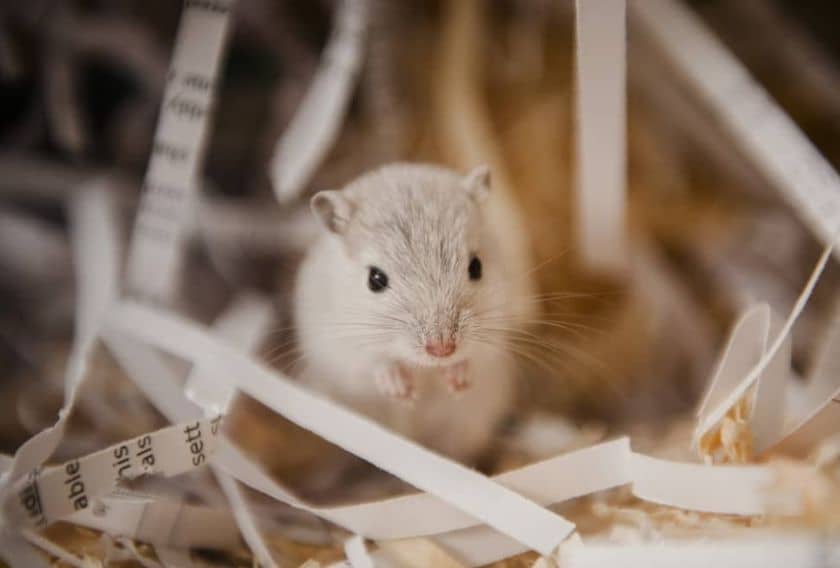Prairie dogs are mammals from the family Sciuraidae and the order Rodentia. Prairie dogs have 5 species, Black-tailed, White-tailed, Gunnison’s Prairie Dog, Utah Prairie Dog, and Mexican Prarie Dog.
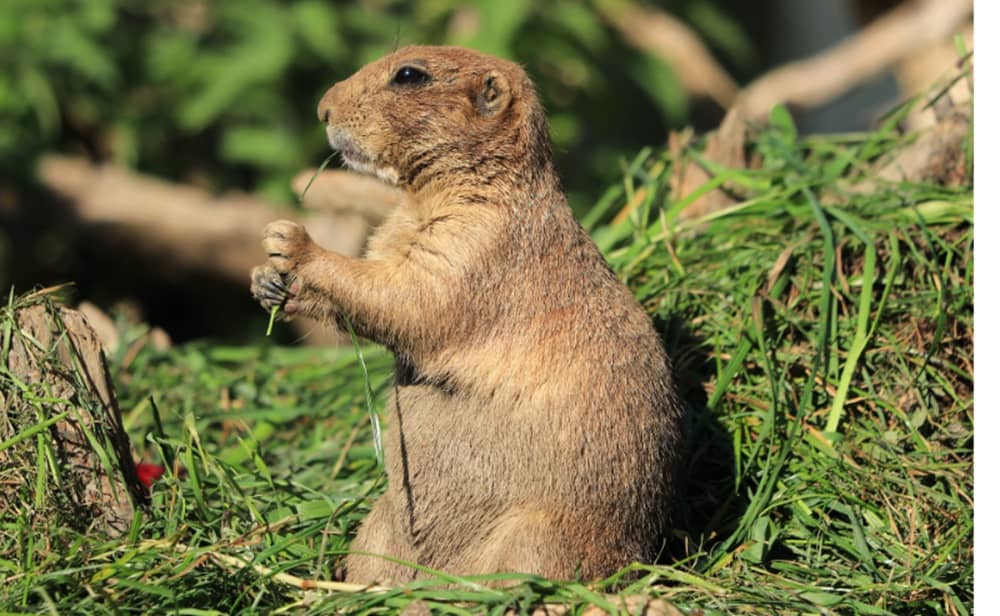
Although these five varieties of prairie dogs are found in various regions, the black-tailed variety is the common one and is often available at pet stores. One of the reasons for this is the fact that this is the only species that doesn’t hibernate.
These animals are strong animals with short tails and small ears. Their tan fur helps to hide them because it camouflages with the soil in which their tunnels are dug.
The Black-tailed species are available in colors from tan to light brown on the body with a black tip on the tail.
They are members of the squirrel family and are distinguished by their intricate social and communication networks.
Black-footed Ferrets, Swift foxes, red-tailed hawks, American badgers, and coyotes eat Prairie dogs.
Prairie dogs are named for their habitat and warning shrill call, similar to a dog’s bark. These bark-like vocalizations are different for a particular danger. These are diurnal means they are active both day and night.
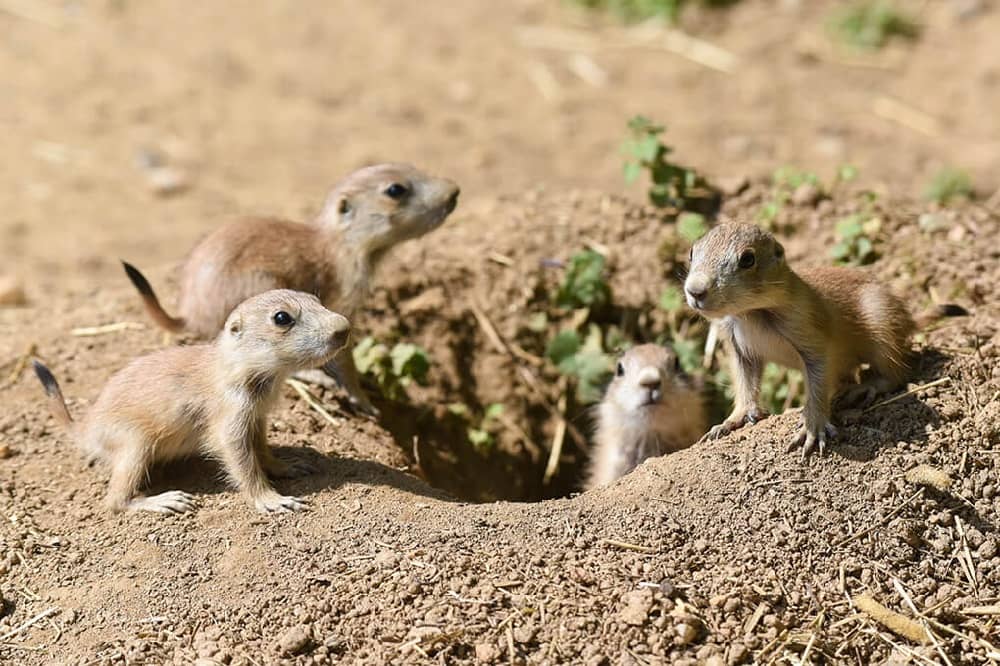 Prairie Dogs are found in the Grasslands of North America, West of the Mississippi River, Canadian Prairies, Arizona, Colorado, Kansas, Montana, Nebraska, New Mexico, North Dakota, Oklahoma, Texas, and Wyoming. They inhabit regions with summer temperatures as high as 38 degrees Celsius and winter temperatures as low as -37 degrees Celsius (-35 degrees Fahrenheit). They live in burrows and it helps them to regulate their body temperature.
Prairie Dogs are found in the Grasslands of North America, West of the Mississippi River, Canadian Prairies, Arizona, Colorado, Kansas, Montana, Nebraska, New Mexico, North Dakota, Oklahoma, Texas, and Wyoming. They inhabit regions with summer temperatures as high as 38 degrees Celsius and winter temperatures as low as -37 degrees Celsius (-35 degrees Fahrenheit). They live in burrows and it helps them to regulate their body temperature.
Prairie Dogs – Male Vs Female
Prairie dogs differ slightly between the sexes. Generally speaking, females are more nurturing, while men are slightly bigger and more dominant, especially during mating season. In terms of behavior, males may exhibit more territoriality, while females may exhibit greater sociality towards humans and other prairie dogs.
Size Information and Lifespan
Prairie dogs are rodents of medium size, usually weighing 1 to 3 pounds(0.5 to 1.5 Kg) and having a length of 12 to 16 inches(30 to 40cm). They have a stout and robust body. They are well-built, with powerful legs designed for digging.
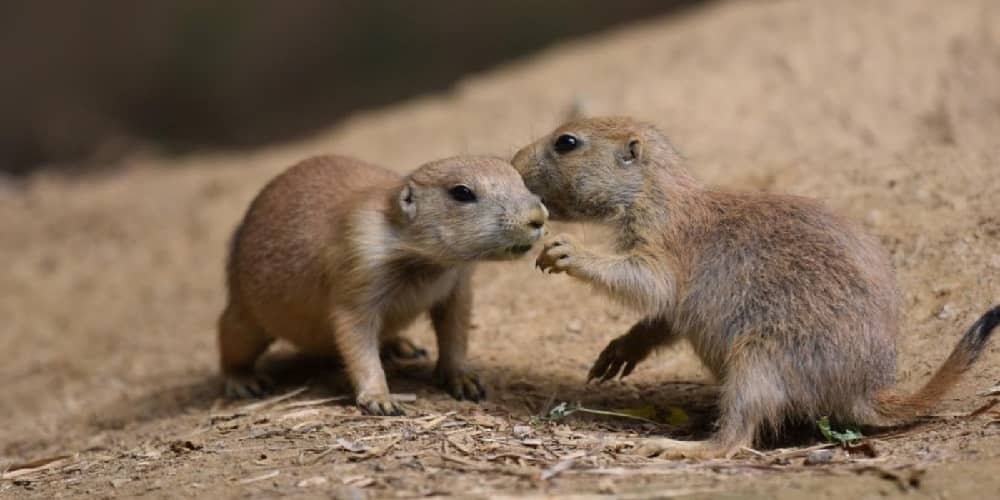
At altitudes of 2000 to 10,000 feet, prairie dogs adapt to live. In their first year, they are prey for many animals and most are eaten.
However, in captivity, they can live up to 8 to 10 years.
Behavior and Temperament of Prairie Dog
Prairie dogs are clever, gregarious animals with a sophisticated vocalization mechanism for communication to live in colonies. They need a lot of social interaction as pets, preferably with other prairie dogs as well as with their human caregivers.
They can develop close relationships with their owners, but if they don’t receive the right socialization or feel threatened, they may turn aggressive. So you need to take out a significant amount of time for daily interaction with them. They require companionship and can be leash-trained for a walk.
How to Care for Prairie Dogs?
A healthy diet, frequent veterinary treatment, and an engaging environment are all essential components of prairie dog care. For them to be well and remain tame, the everyday connection is necessary.
Housing Requirements for Prairie Dogs
Prairie dogs need a spacious enclosure with plenty of room to dig and explore. You should provide a concrete pit filled with 3 feet of dirt to give them a burrowing environment. It will mimic their natural habitat and keep them more content. You should keep your prairie dogs in warm temperatures if your house is colder. They are poor in regulating their body temperature. You can also keep a heat pad inside the enclosure else keep a heat source nearby.

They may develop behavioral issues if you do not provide them with burrowing opportunities. For instance, they can be more aggressive. The best option is a sizable, multi-level cage or an outdoor pen with safe fencing that has been specially developed. There should be secure digging spaces, tunnels, and hiding places within the enclosure.
Specific Substrate Needs
Given that prairie dogs are natural diggers, a good substrate is essential. Their natural habitat can be replicated with a mixture of hay, sand, and soil. Make sure there is enough depth in the substrate for burrowing and digging.
Food Bowl
The prairie dog primarily eats a high-fiber diet including Timothy hay, grass hay, and orchard hay. The food bowl should be filled with seeds or prairie dog pellets. You can also forage food so as to make their environment more interactive.
Water Bowl or Water Bottle
The prairie dogs survive in arid regions with minimal water intake. They generally complete their water intake needs from vegetables and fruits.
Exercise and Toys
Exercise is essential for prairie dogs as they can easily gain weight if their diet and exercise regimens are not balanced.
They require enrichment and activities as well. This is accomplished via foraging, surveying the area, digging new burrows, and coming across novel scents and items. Every week or whenever I clean everything out, I like to arrange their play area and cages differently.
I occasionally rearrange the cage space as well as the hiding places, dispersing food and insects in various spots and corners. Take a few leaves or twigs from outside and let them explore the novel scents. Large wheels are what I use in the cage, but spending time outside is ideal.

Being energetic animals, prairie dogs need a lot of exercise to stay in good health. It is imperative to provide a large enclosure with lots of climbing and digging areas. They spend their most of energy digging long burrows.
They are social creatures and keeping them with a companion keeps them physically and mentally stimulated. Supervised outdoor recreation can also help keep them occupied and active.
What Does a Prairie Dog Eat or Drink?
Prairie dogs are herbivorous and occasionally eat insects. Their diet should mimic their natural intake, focusing on high-fiber foods.
The high-fiber diet is a must for tearing down their overgrowing teeth. Fresh hay should make up the majority of their diet, supplemented with fresh vegetables such as raw carrots, raw sweet potatoes, and a small amount of specially formulated prairie dog pellets.
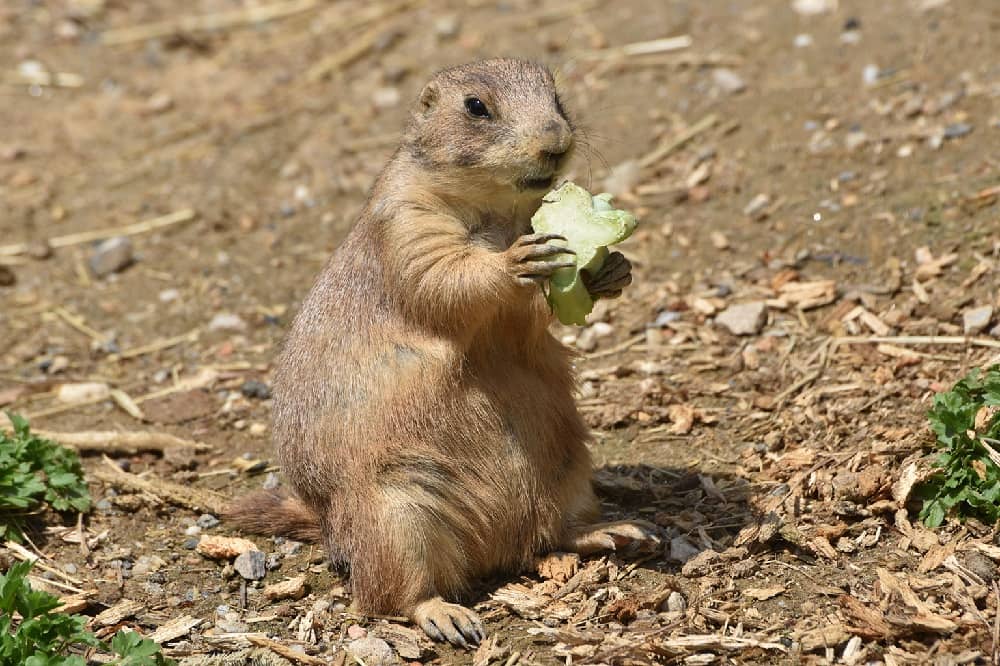
A general rule can be that you give 90% hay and the rest 10% fruits, vegetables, and treats or pellets. They also enjoy seeds, buds, whole oats, and broad-leaf forbs. You should avoid sugary or fatty treats, which can lead to health issues.
Timothy hay, aspen or pine shavings, and/or newspaper should be used as their bedding, and it needs to be replaced at least once every five to seven days. Provide them with plenty of items to damage, such as blankets, cardboard boxes to shred, non-toxic toys, and bird toys.
How to Handle Prairie Dogs?
Handling these creatures requires patience and gentleness. You should build some trust by showing your presence around them. Offering them some treats, and then gentle petting or handling can be proceeded.
After being weaned and raised in a humane atmosphere, prairie dogs rapidly and effortlessly replace their colony family with people.

When handled correctly, prairie dogs will look for you as their “best” friend and spend much of their time outside of the cage by your side or in your lap.
Use treats to build trust. Regular handling from a young age can help them become more comfortable with human interaction.
Health Concerns of Prairie dogs
Prairie dogs can be prone to obesity, dental problems, and respiratory infections. Regular veterinary checkups are essential. Rutting is the breeding season of Prairie dogs. During this period, both male and female prairie dogs become more aggressive than usual. They develop a tendency to even bite more often and without warning. This rutting season lasts for several months, from October to March.
Signs of ill health include lethargy, loss of appetite, labored breathing, and unusual discharge from the eyes or nose. You may also observe symptoms of diarrhea which is the result of poor diet or sudden dietary changes.
Signs of Ill Health
- Lethargy and inactivity
- Loss of appetite or weight loss
- Labored breathing or wheezing
- Discharge from eyes or nose
- Unusual lumps or bumps
- Diarrhea or changes in stool consistency
Ethics and Legality
Prairie dog is permitted as a pet in different states such as Connecticut, Florida, Minnesota, Mississippi, Montana, North Carolina, Ohio, Texas, Vermont, and West Virginia.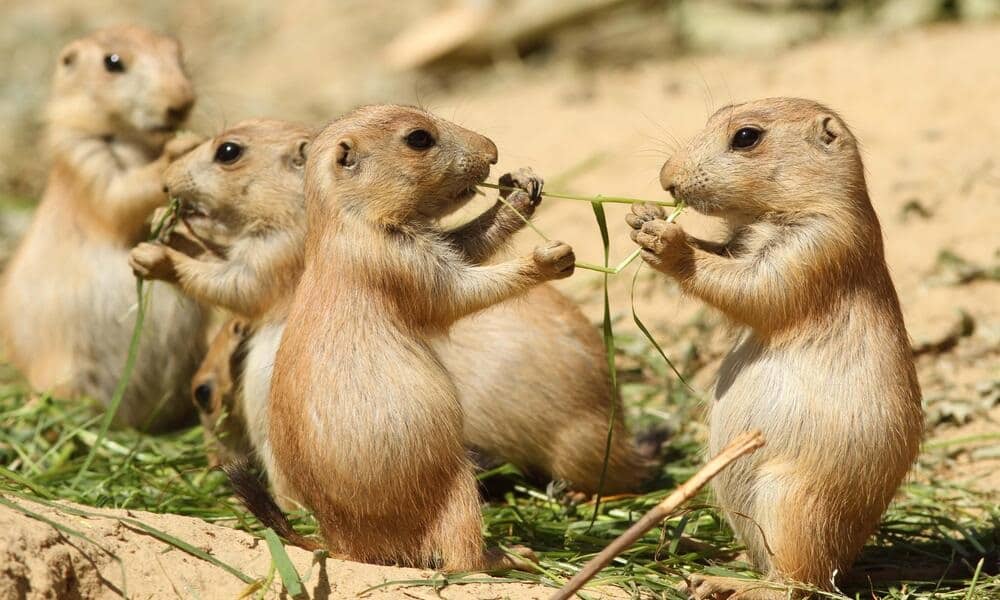
Certain areas have stringent laws because of worries about zoonotic illnesses like the plague. Before getting a prairie dog, make sure you are aware of the local rules and acquire all required licenses.
Prospective owners have an ethical obligation to take into account the social needs of the animal and guarantee that they can offer a suitable home.
Related Species
Prairie dogs are closely related to other ground squirrels, such as marmots, woodchucks, and chipmunks. Each species has unique care requirements, but they share some similarities in terms of social behavior and habitat needs.
Similar pets related to prairie dogs are
Where to Buy
Prairie dogs can be purchased from reputable breeders or exotic pet stores. It is easy to It’s important to ensure that the seller is knowledgeable and that the animals are healthy and well-socialized.
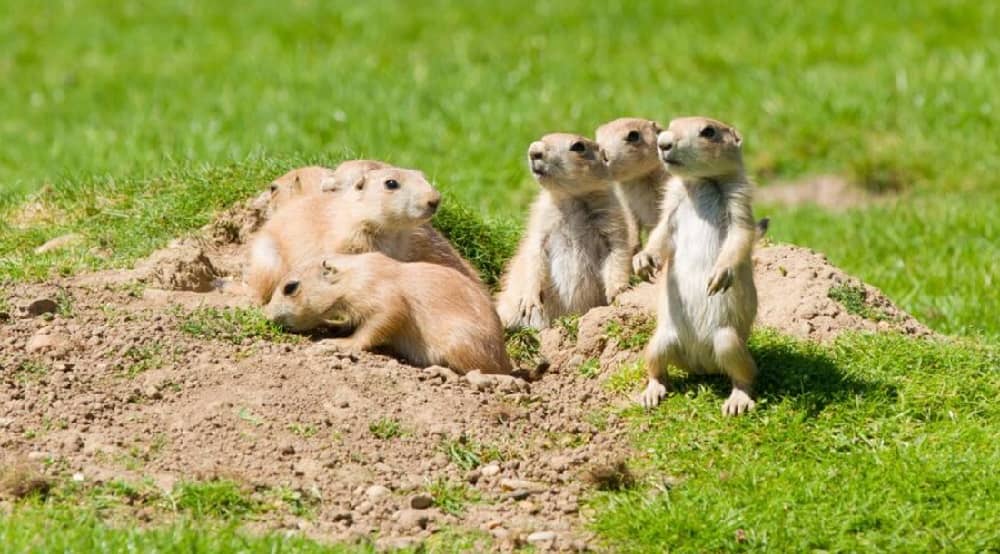
The initial cost of a prairie dog can range from $100 to $300.You should avoid buying from sources that cannot provide proper care information or health guarantees.
Upkeep Cost
Monthly expenses, including food, bedding, and veterinary care, can add up to $50 to $100. Unexpected health issues can increase costs significantly, so having a financial buffer is advisable.
Grooming
When it comes to grooming, prairie dogs are rather low maintenance. Generally, regular nail clipping and the odd brushing to get rid of loose fur are plenty. They take sand baths to remove any parasites from their bodies.
Reproduction and Breeding of Prairie Dogs
Prairie dogs become sexually mature at 2 years of age. Breeding prairie dogs requires specific conditions, including a suitable environment and proper timing within their natural reproductive cycle.
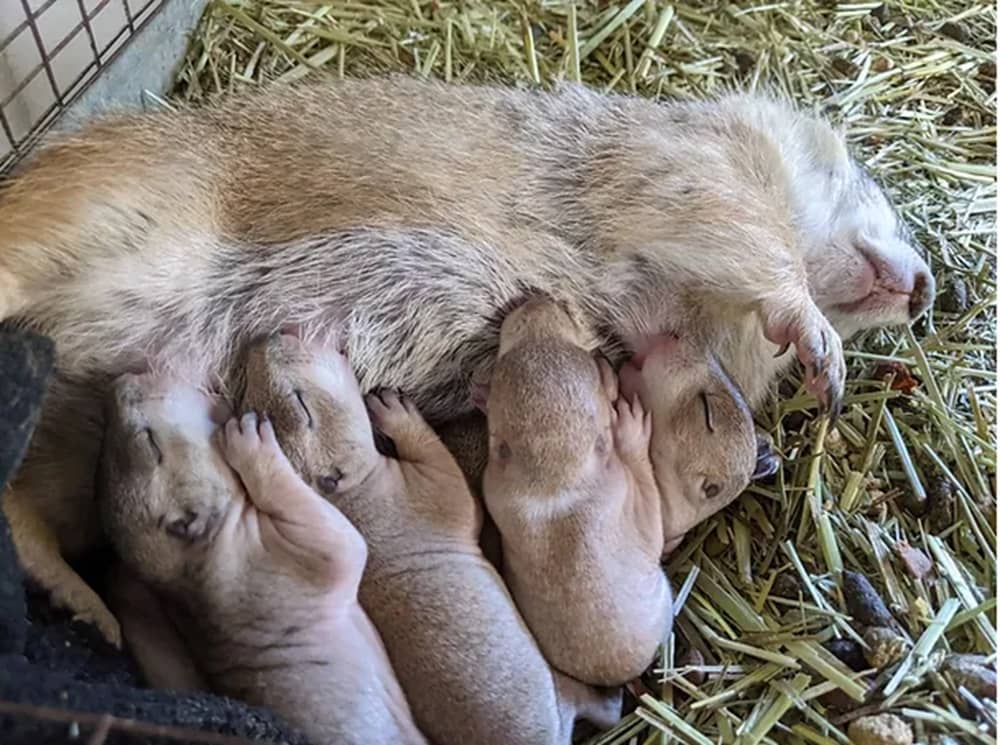
Females have a short breeding season and typically give birth to one litter per year. It delivers 10 young in one litter. The gestation period lasts for 30 days. Experts only should carry out breeding due to the involvement of many complexities.
Pros and Cons of Keeping a Prairie Dog as a Pet
Prairie dogs can make fascinating pets with the right care and attention but there are certain points you should must analyze before bringing them home.
Pros
- Clean
- Highly social and interactive
- Interesting and intelligent behavior
- able to establish close relationships with owners
- unusual and distinct pet
- Can be leash-trained
Cons
- Needs extensive social interaction—nearly six hours per day
- possible ethical and legal issues
- may be vulnerable to particular health problems
- Requires a large and safe enclosure
- noisy and prone to chewing on furniture
- can be carriers of bacteria or viruses; for example, they are thought to be the cause of the plague.
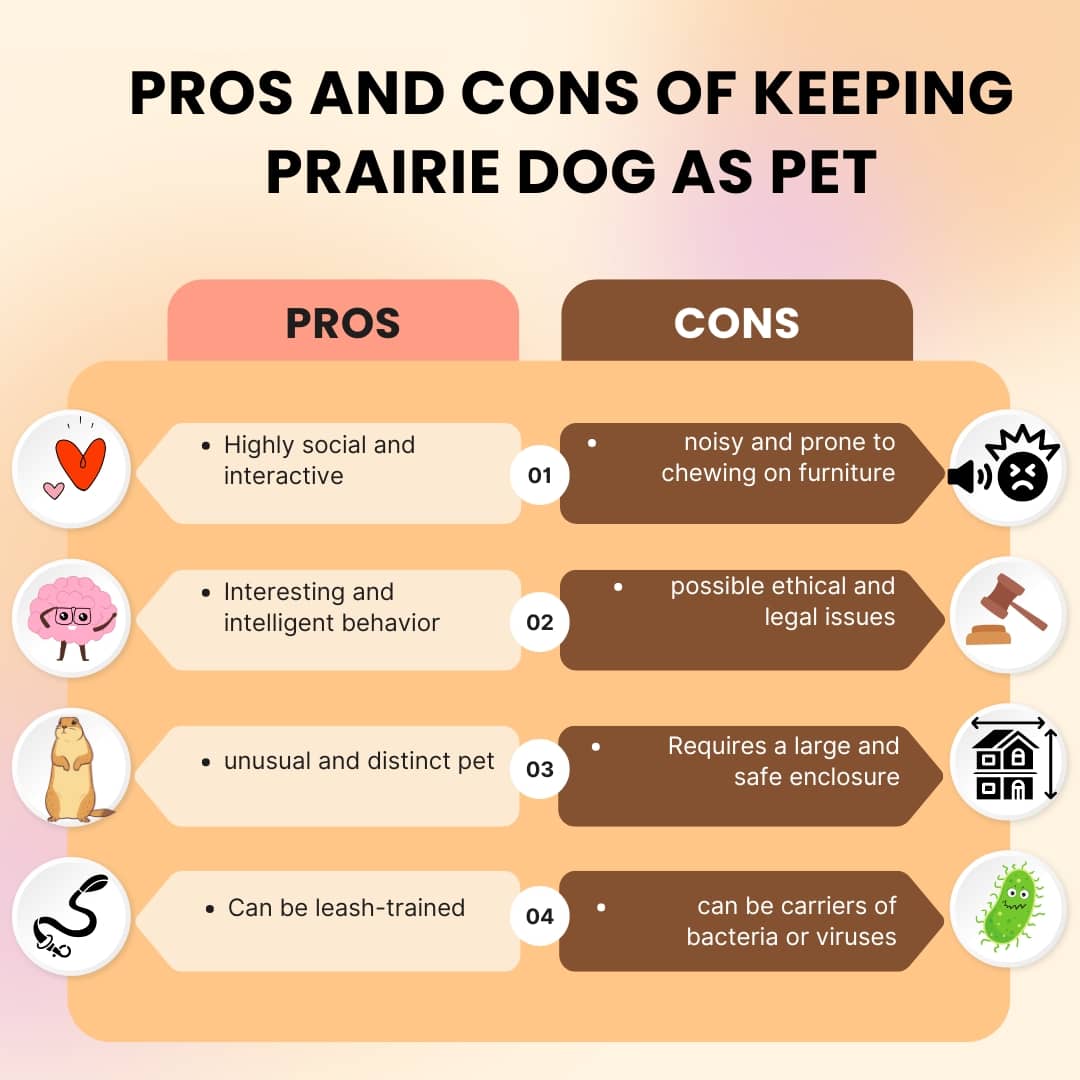
Interesting Facts About Prairie Dogs
- These creatures have a complex language with different calls for various predators.
- They can live up to 8 to 12 years in captivity with proper care.
- Prairie dogs are keystone species, meaning their presence supports other wildlife.
- They practice communal care, with females often nursing each other’s pups. The group contains one male and a few females and young.
- Prairie dogs can “kiss” and groom each other to reinforce social bonds.
- They have a natural instinct to dig extensive burrow systems called “towns.”
- Prairie dogs can recognize individual humans.
- They are primarily herbivores but will occasionally eat insects.
- Their teeth are constantly growing and need to be worn down by chewing
- Prairie dogs have a special vocalization for identifying humans as threats or friends.
- During Rutting, females will steal things to build nests for their “invisible babies”.
- Their tails have different coloring.
- Prairie dogs dig burrows 5-10 m long and at a depth of 2-3 m from the ground. They are also known as “Ecosystem Engineers”.
- They share their burrows even with their predator, black-footed ferret.
- They need good companionship, and nearly six hours of interaction with their owner to make them feel good.
- Just like chinchillas, they also take sand baths to get rid of parasites.
- They get most of their water by just eating plants
- Black-tailed prairie dogs do not hibernate as compared to other species.
- They create well-ventilated burrows.
- They also create listening posts inside their burrows to listen to the footsteps of predators without being out.

Frequently Asked Questions
Question1. Do Prairie dogs make good pets for children?
Answer: They need a lot of attention. They are difficult, nippy, and aggressive. Therefore they are not suitable pets.
Question2. What are the common health issues in Praire dogs?
Answer:. Obesity, dental problems, and respiratory infections are some of the common health concerns in Praire dogs which can be taken care with a well-balanced diet.
Question 3. Can Prairie dogs be trained to use a litter box?
Answer: It is possible to successfully litter train by using consistent training techniques and rewarding behavior. But they are not as reliable as cats.
Question 4. Do prairie dogs bite?
Answer: Yes, they may bite and their bite is very painful.
Question 5. Do Prairie dogs pose any threat to humans?
Answer: While they can carry zoonotic diseases, responsible pet ownership, and proper hygiene minimize risks.
Question 6. Can you walk a prairie dog on a leash?
Answer:. The adequate exercise for a prairie dog is walking. You can use a good-quality figure H harness for your prairie dog. It is easy to adjust the snap accordingly.
Question 7. What kind of toys do prairie dogs like?
Answer: They enjoy tunnels, digging boxes, and chewing toys. Puzzle feeders can also provide mental stimulation.
Question 8. Do Prairie dogs smell?
Answer: They do have a smell similar to an old sock but this smell dissipates quickly. Males have a stronger musky odor than females. This smell is due to anal glands.
Question 9. Are these creatures noisy?
Answer: They can be vocal, especially when excited or when they try to alert to danger, but many owners find their sounds endearing.
Question 10. Which prairie dog is the rarest?
Answer: The Utah prairie dog is the rarest species.
Conclusion:
In conclusion, for those who are ready to meet their needs, prairie dogs can be entertaining and interesting pets. They may offer years of fun and company if given the right care. Before bringing a prairie dog into your house, you should be well-prepared


